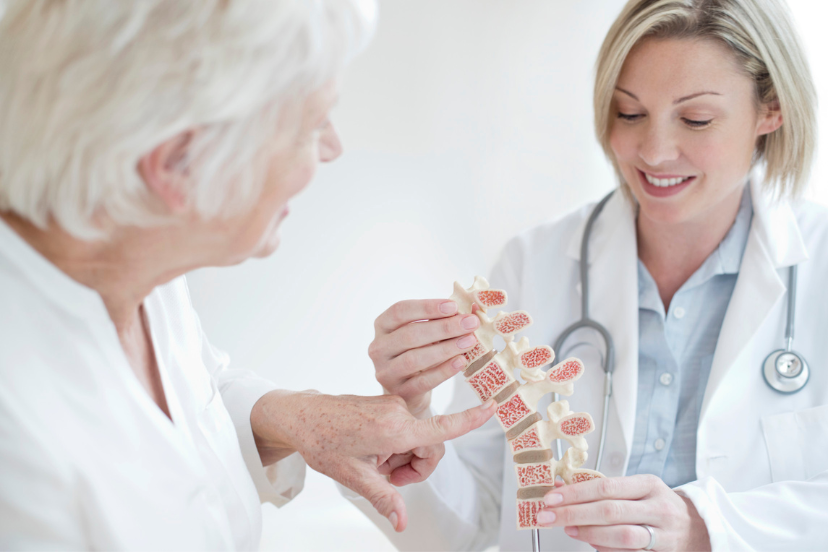How is the Risk of Fractures Assessed in Osteoporosis?
Osteoporosis is a stealthy foe, often lurking undetected until a fracture occurs. So, How is the risk of fractures assessed in osteoporosis? This bone-weakening condition affects millions worldwide, making it essential to assess the risk of fractures effectively. In this comprehensive guide, we’ll delve into the intricacies of osteoporosis, explore the various methods used to assess fracture risk, and answer frequently asked questions about this critical topic.
Introduction
Osteoporosis, often referred to as the “silent disease,” is characterized by the gradual weakening of bones, leading to increased susceptibility to fractures. To combat this condition effectively, healthcare professionals need to assess an individual’s risk of fractures accurately. This assessment is crucial in preventing debilitating injuries and improving overall quality of life. In this article, we’ll break down the key aspects of how the risk of fractures is assessed in osteoporosis.
Understanding Osteoporosis
What is Osteoporosis?
Osteoporosis is a bone disease characterized by the loss of bone density and quality. This results in bones becoming fragile and prone to fractures, even from minor falls or everyday activities. It’s often called the “silent disease” because it progresses without symptoms until a fracture occurs.
Why Does Osteoporosis Matter?
Osteoporosis poses a significant public health concern. According to the International Osteoporosis Foundation, fractures due to osteoporosis are more common than heart attacks, strokes, and breast cancer combined. Assessing the risk of fractures is, therefore, a critical aspect of managing this condition.
Factors Contributing to Fracture Risk
Bone Density
Bone density, measured through a DXA (Dual-energy X-ray Absorptiometry) scan, is a primary indicator of fracture risk. Low bone density indicates a higher likelihood of fractures.
Age
As we age, our bones naturally lose density and strength, increasing the risk of fractures. This is particularly relevant for postmenopausal women.
Gender
Women are generally at a higher risk of osteoporosis and fractures due to hormonal changes during menopause.
Family History
A family history of fractures or osteoporosis can increase an individual’s risk.
Lifestyle Factors
Smoking, excessive alcohol consumption, a sedentary lifestyle, and poor nutrition can all contribute to osteoporosis and higher fracture risk.
Medications
Certain medications, such as corticosteroids, can weaken bones and increase the likelihood of fractures.
Methods for Assessing Fracture Risk
Clinical Assessment
- Medical History: Doctors will review the patient’s medical history, including any previous fractures and family history of osteoporosis.
- Physical Examination: A thorough physical examination may reveal signs of poor posture, height loss, or other indicators of bone health.
- Fracture Risk Assessment Tool (FRAX): FRAX is a widely used tool that calculates a person’s ten-year probability of hip and major osteoporotic fractures based on various risk factors.
Bone Density Testing
- DXA Scan: Dual-energy X-ray Absorptiometry (DXA) is the gold standard for measuring bone density. It provides a T-score, which compares a patient’s bone density to that of a healthy young adult.
- Quantitative Ultrasound (QUS): QUS measures bone density at peripheral sites like the heel or finger. While not as precise as DXA, it can be a useful screening tool.
Blood Tests
- Calcium and Vitamin D Levels: Low levels of calcium and vitamin D can indicate an increased risk of osteoporosis and fractures.
Imaging
- Vertebral Fracture Assessment (VFA): VFA is a specialized X-ray to detect vertebral fractures, which often go unnoticed but significantly impact fracture risk.
Other Specialized Tests
- Bone Turnover Markers: Blood or urine tests can measure markers that indicate bone turnover, providing insights into bone health.
- Genetic Testing: Genetic factors can play a role in osteoporosis risk, and some genetic tests can assess this susceptibility.
FAQs About Fracture Risk Assessment in Osteoporosis
FAQ 1: Is bone density the only factor considered in fracture risk assessment?
No, while bone density is a crucial factor, healthcare professionals also consider age, gender, lifestyle, family history, and other clinical factors to assess fracture risk comprehensively.
FAQ 2: Can men get osteoporosis?
Yes, osteoporosis is not exclusive to women. While it is more common in females, men can also develop this condition and face a risk of fractures.
FAQ 3: Are there any symptoms of osteoporosis?
In the early stages, osteoporosis typically has no symptoms. Fractures are often the first noticeable sign.
FAQ 4: How often should one undergo bone density testing?
The frequency of bone density testing varies based on individual risk factors. Generally, testing may be recommended every one to two years for high-risk individuals.
FAQ 5: Can osteoporosis be prevented?
While osteoporosis cannot always be prevented, lifestyle modifications such as regular exercise, a balanced diet, and avoiding smoking and excessive alcohol consumption can help reduce the risk.
FAQ 6: What treatments are available for osteoporosis?
Treatment options for osteoporosis include medications to improve bone density, lifestyle changes, and fall prevention strategies. The choice of treatment depends on individual risk and preferences.
Conclusion
Assessing the risk of fractures in osteoporosis is a multifaceted process that combines clinical evaluation, bone density testing, and consideration of various risk factors. Early detection and intervention are crucial in preventing debilitating fractures and improving the quality of life for individuals with osteoporosis. If you or someone you know is at risk, consult with a healthcare professional to discuss appropriate assessments and preventive measures. Remember, knowledge and proactive management can help you stay ahead of this silent disease.
In conclusion, understanding “How is the risk of fractures assessed in osteoporosis” empowers individuals and healthcare providers to make informed decisions that can lead to better bone health and a reduced risk of fractures. Don’t wait until a fracture occurs—take action today to safeguard your bone health.




